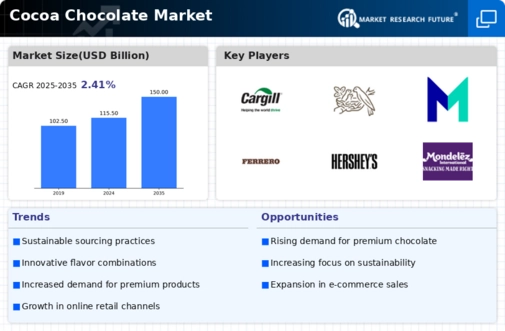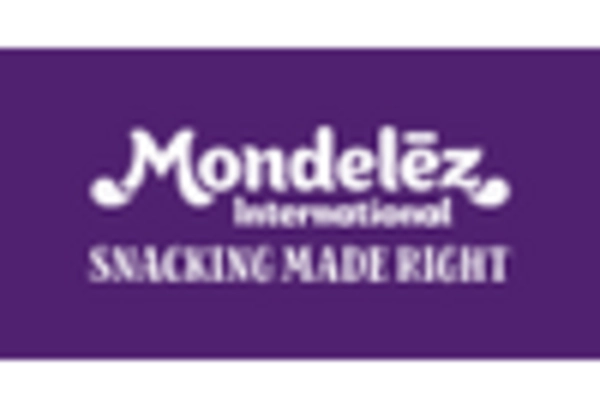Market Share
Cocoa Chocolate Market Share Analysis
The Cocoa Chocolate market is a dynamic and indulgent sector where companies employ various market share positioning strategies to capture the hearts and taste buds of consumers. One key strategy is product differentiation, where companies focus on creating unique and premium chocolate offerings. This may involve using high-quality cocoa beans, incorporating exotic flavors, or experimenting with innovative textures. By differentiating their products, companies not only attract discerning chocolate enthusiasts but also position themselves as leaders in the premium chocolate segment, contributing to increased market share.
Branding and storytelling play a significant role in market share positioning within the Cocoa Chocolate industry. Companies often emphasize the origin of their cocoa beans, their commitment to sustainable and ethical sourcing, and the craftsmanship involved in chocolate production. Such narratives not only resonate with socially conscious consumers but also contribute to building a strong brand identity. Brands that successfully communicate their values and stories can establish an emotional connection with consumers, fostering brand loyalty and increasing market share.
Innovation in flavor profiles is a driving force in the Cocoa Chocolate market. Companies continuously experiment with unique combinations, infusions, and exotic ingredients to create chocolates that stand out in a competitive market. Whether it's sea salt-infused chocolate, spicy chili variations, or unconventional fruit pairings, innovative flavors attract adventurous consumers seeking novel taste experiences. Successful innovation not only captures consumer attention but also positions brands as trendsetters, contributing to a larger market share.
Strategic partnerships and collaborations are becoming increasingly common in the Cocoa Chocolate market. Companies recognize the value of teaming up with other brands or influencers to create limited-edition chocolate products or engage in joint marketing campaigns. Such collaborations not only attract a broader audience but also enhance the perceived value of the chocolate. Brands that successfully leverage partnerships can tap into new markets and consumer segments, contributing to increased market share.
Pricing strategies vary within the Cocoa Chocolate market, catering to different consumer segments. While some brands position themselves as premium, emphasizing the quality of ingredients and craftsmanship, others adopt a more affordable pricing strategy to appeal to a wider audience. Striking the right balance between perceived value and affordability is crucial for market share positioning. Successful companies understand the preferences of their target market and align their pricing accordingly to gain a competitive edge.
Distribution channels are instrumental in market share positioning within the Cocoa Chocolate industry. Companies strategically choose outlets that align with their target demographic, including specialty chocolate shops, high-end grocery stores, or online platforms. Widespread availability and strategic placement contribute to increased visibility and accessibility. Brands that effectively manage their distribution channels can reach a diverse consumer base, expanding their market share.

















Leave a Comment